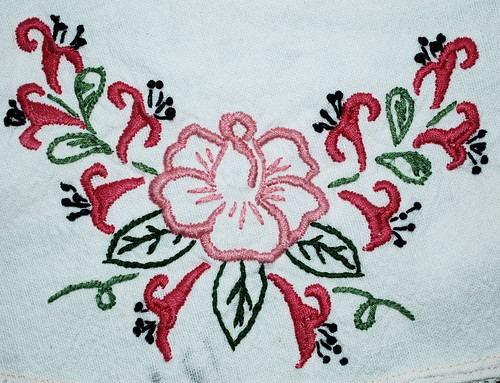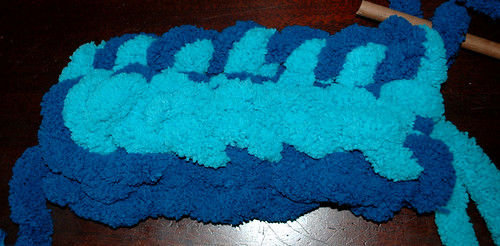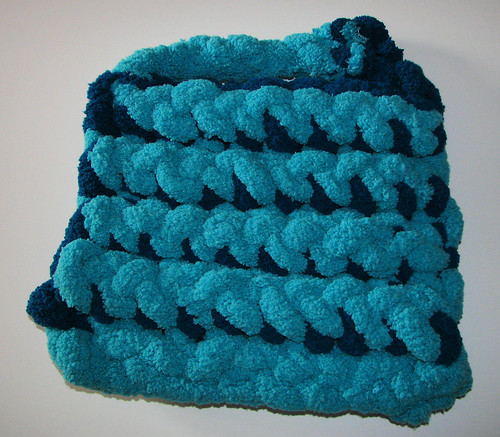I think this next piece is my favourite of them all. A gorgeous round tablecloth, just over 2 feet across, not counting the crocheted edging.

This is another piece from my great aunt. The fabric is thick and densely wove, and looks to be cotton. I got a little surprise when I examined it more closely for this post. A distictive numerical stamp on the back. I do believe this used to be some sort of sack! A flour or sugar sack, perhaps.

Here's a detail of the repeated floral motive. It is done in embroidery floss using satin stitch, stem stitch and French knots. The black marks that you see on the bottom are from what looks to be other numbers on the back, written in marker, that extend beyound the hem. The fabric was definitely repurprosed.

I just love this thread crochet border! There is some minor damage to a couple of lengths of chain that I have found, and a couple of dots of what looks to be rust, but aside from that, this piece is in suprisingly good condition. Very sturdy. I'm pretty sure I can fix the damage to the crochet myself, too, in such a way that it would not be noticable anymore. I just have to make sure I can match the thread, first.
The hem is something I find really remarkable about this piece. As you can see from the photo above, it has two rounds of machine stitch. Hemming something round is always a challange, so I'm impressed with how neat it is right from the start.
It's the back of the hem that has me fascinated! Looking at it, there's a bit more concern about the condition of the piece, and it will need gentle care.
The crochet edging was actually worked directly onto the fabric. It looks like a circle of single crochet was worked around the edge of the circle first, encasing about a quarter inch of fabric, but worked so that the top of the stitches faced *into* the work, instead of out. At least one more round of single crochet was worked after that, then there's a ring of double crochet worked around the edge, serving as the foundation for the rest of the edging, which is worked in rows.
The foundation portion of the edging is fastened down with basting stitches, the edge is folded under for the hem, then machine sewn, creating the hem and turning the crochet foundation to the outside of the piece at the same time. The very first round of single crochet is completely hidden in the back. This is the part that is showing some wear. You can see the loose ends of the weave through the crochet thread, and in a couple of places they've worked themselves out of the loops around them, leaving empty crochet stitches hanging around. Of the two rounds of machine stitch, the inside one used to just catch the edge of the hem, but as the ends worked themselves loose, very little of it is still attached. It's the outer ring of machine stitching that is holding the hem in place.
I can't tell if the edging was completed before or after the hem was turned and sewn. I would guess after, or the pulling on the fabric would have yanked the crochet foundation right out of the weave. Unless the fabric was cut *after* the crochet was worked. That's certainly possible. I would love to have seen it being worked.
It's a remarkable piece, and I just love it!















